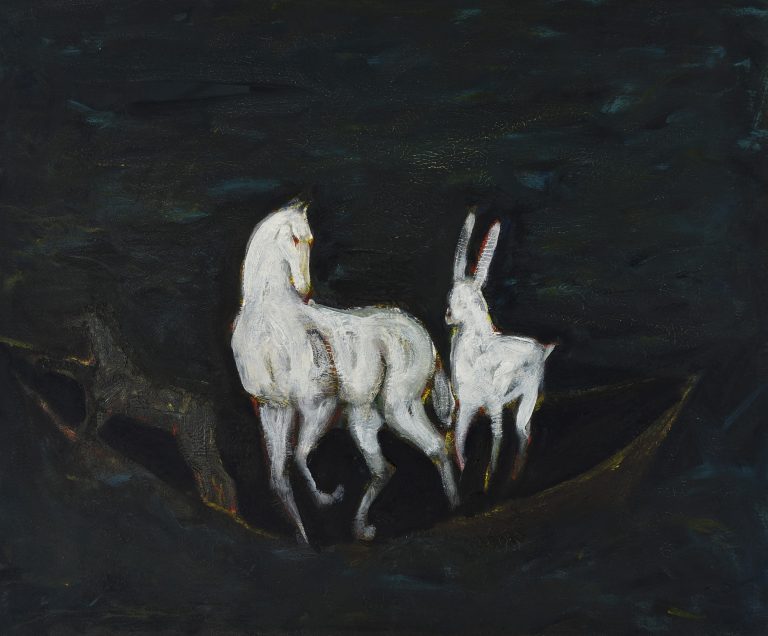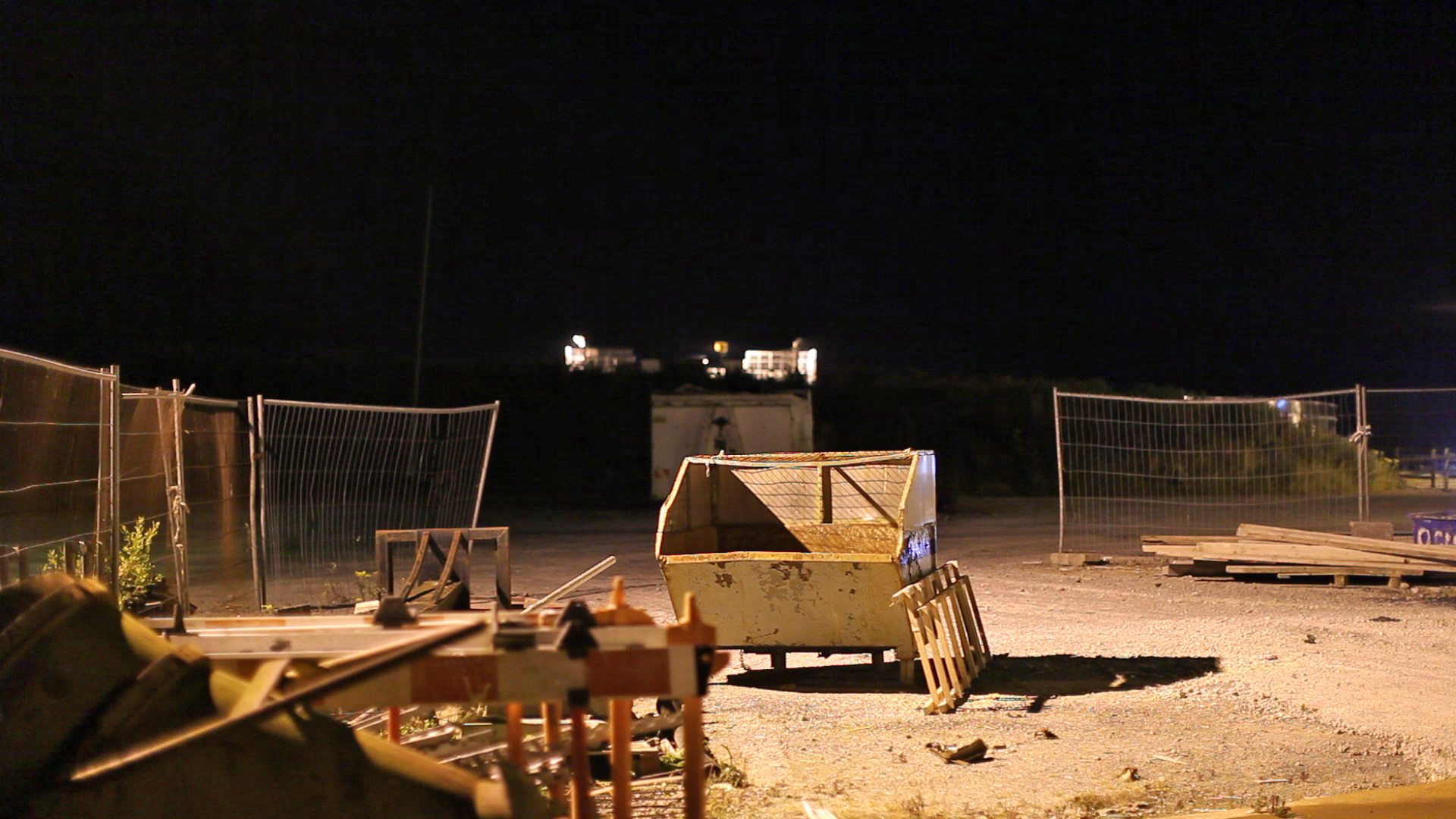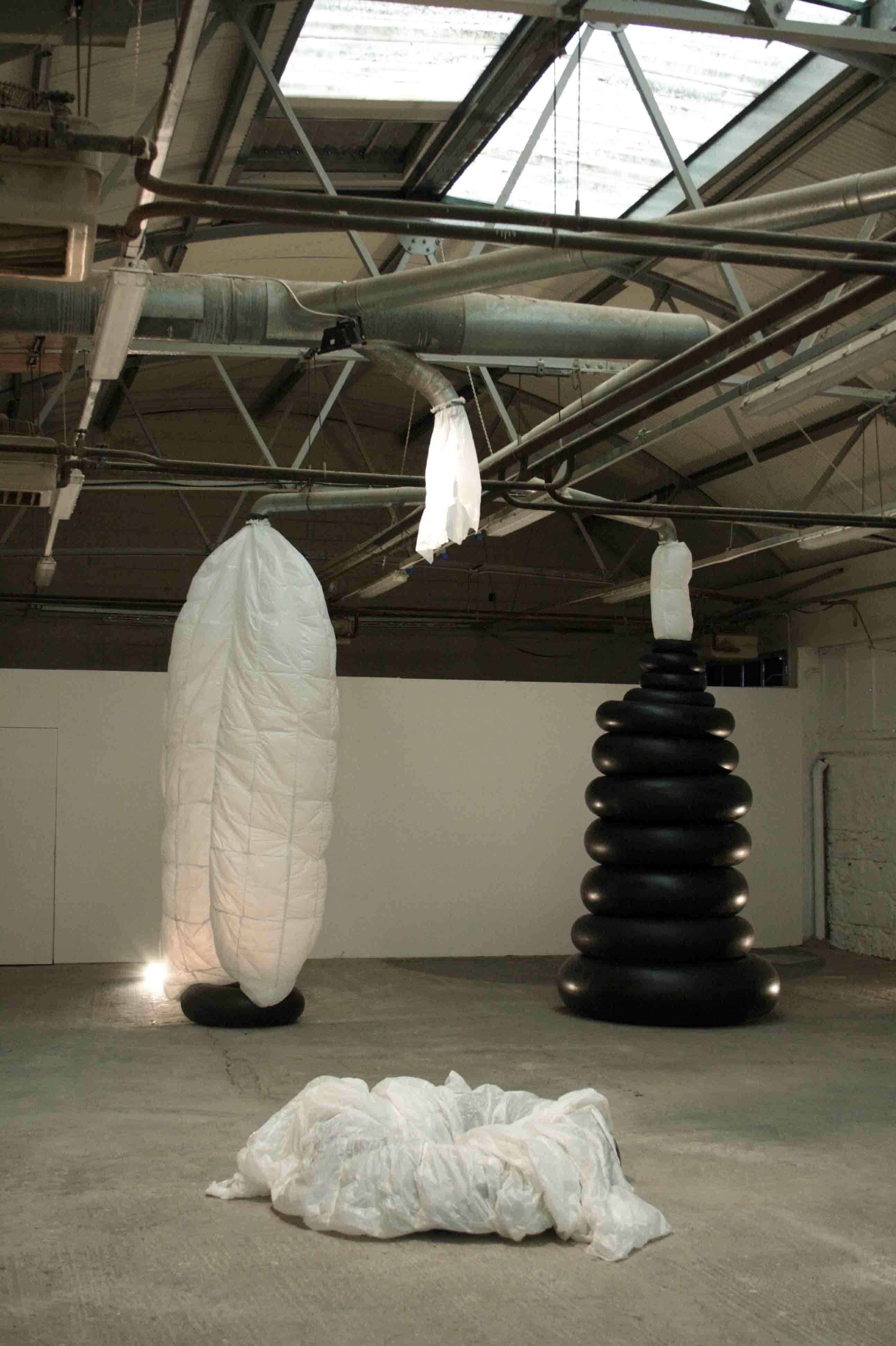Nature creates similarities. One need only think of mimicry. The highest capacity for producing similarities, however, is man’s. His gift of seeing resemblances is nothing other than a rudiment of the powerful compulsion in former times to become and behave like something else.
– Walter Benjamin, ‘On the Mimetic Faculty’ (1933)
In Joachim Koester’s recent exhibition In the Face of Overwhelming Forces at Camden Arts Centre, the act of mimicry formed the central conceit. Working with film installation, moving image, and audio recordings, each work sought to build narratives through movement, choreography, and non-verbal gesture, with the intention that these narratives would unleash a primal understanding believed to be contained within the corporeality of the human body – described in the artist’s words as a ‘kinaesthetic echo of events’ – and realised through the ritualistic act of mimicry. This idea, that knowledge is imprinted on an individual and collective unconscious and that to engage in such behaviours reveals hidden aspects of perception and new boundaries of apparent reality, is quite a fantastical one, akin to occultist or pagan beliefs. It is this fascination with mimicry as a human compulsion that was explored at Camden Art Centre, in a show that spanned the past twelve years of the Danish artist’s career.
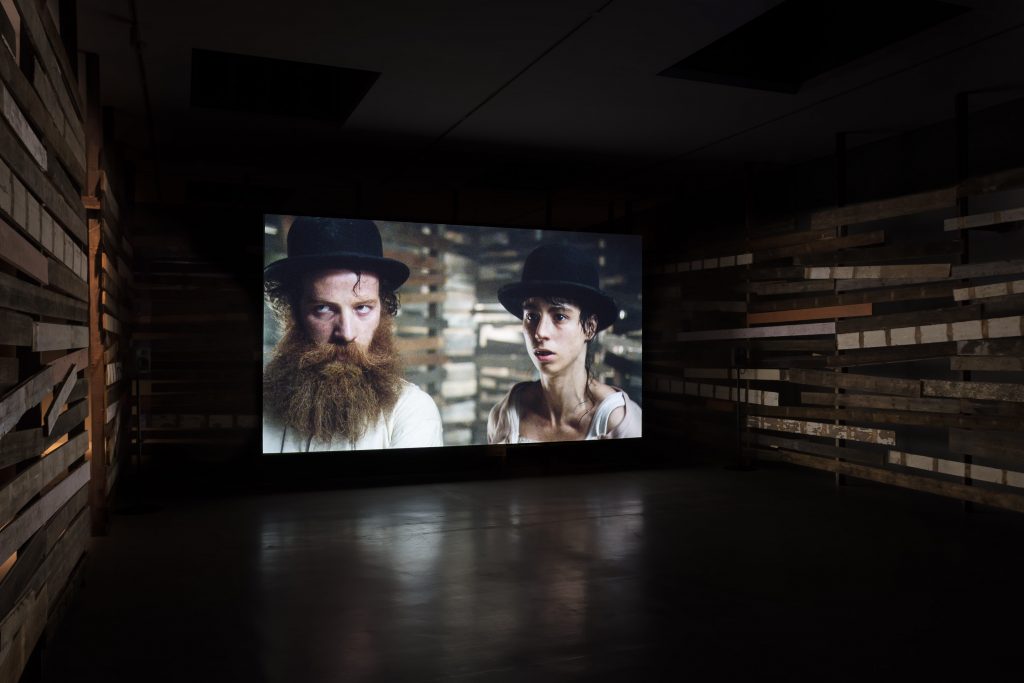
Installation view of Joachim Koester, In the Face of Overwhelming Forces
Camden Arts Centre
2017
Courtesy of Camden Arts Centre
Photo: Mark Blower
In gallery one, we were introduced to the first of several film works that attempted to expand on these complex ideas. The Place of Dead Roads (2013) lifts its title from the eponymous 1983 novel by William S. Burroughs, which tells the story of a gay gunslinger in the Wild West. The film is projected before a makeshift wooden framework, constructed from a random assortment of timber slats, creating a temporary theatrical backdrop that mirrors the wooden enclosure of the film’s setting. Four somewhat androgynous players dressed in western costume pace and sway in the foreground, as if anticipating an invisible foe. The cinematic framing of each scene is perplexing, yet visually engaging. The gestures and expressions are derived from the tropes of a ‘duel’ – the corralling gunslinger circling their opponent, the gun draw, a swivel of the hips. However, each performer jerks and spasms in exaggerated gesticulations that rarely respond to the actions of their troupe. Instead, their reactions all appear to be provoked by an internalised perceived threat. The moments of rapidity are interspersed with footage of the performers at rest, observing, like a pride of lions. Throughout, all one can hear is the amplified sound of grunts, the crunch of gravel underfoot and the stamp of a booted heel. Indeed, although the costumes place the performers within the genre of the western, one might also place the work within the genre of the nature documentary.
The wooden framework extended into the adjoining gallery, where the co-commissioned film Maybe this act, this work, this thing (2016) was staged.[1] The installation comprised a checkerboard floor laid out in front of the projected screen. On screen, two female actors in embellished vaudeville dress orbit and pivot around the darkened stage. Vaudeville theatre, a popular form of entertainment in the late nineteenth century, was made obsolete with the advent of cinema. In each scene, as the camera moves and envelopes the characters, one speaks in indiscernible hushed whispers as they enacts a series of peculiar gestures. The characters pluck, grab, and pinch at the air, before turning on their heel to begin a new set of instructions. At one point, a character uses her hands to scramble and burrow. At another, she continually slaps the palms of her right hand against the front of her left. With each display, the orchestrated actions are understood as an attempt to mimic the mechanical apparatus of cinema – the whirr of the celluloid and the clack of the shutter.
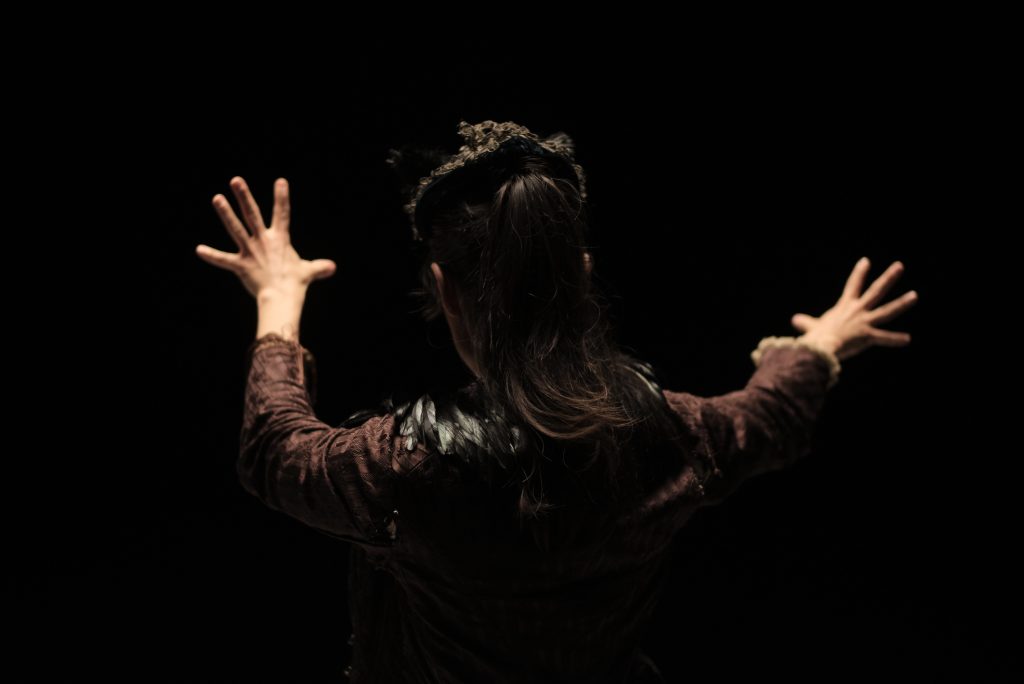
Still from Maybe this act, this work, this thing, 2016
HD video installation
20 min.
Courtesy the artist and Greene Naftali Gallery and Jan Mot
Emerging from the darkness of gallery two, I encountered the silent colour video Ghost Mantis (2015) on a wall-mounted plasma monitor in the main corridor. The footage captures the soft greenish silhouette of a preying mantis in its natural habitat. Among the vegetation, the insect’s capacity to camouflage makes it indistinguishable against the foliage. It is only when the camera comes into hard focus that the slightest of movements exposes its presence.
What were the overwhelming forces that Koester addresses in these works? Was technology the dominant force? Was the artist proposing that mimesis should be comprehended as a technology? Or as a defensive strategy for resisting progress? The invention of the camera was a turning point in our understanding of the lived world – with the ability to document similarities, mimicry reveals itself. The capacity to capture, enlarge, and slow down an image through film, allows for the mimetic modes of perception to be fragmented, broken down, and analysed. The Australian anthropologist Michael Taussig has argued that Benjamin’s assertion of the importance of the mimetic faculty reflects a belief that mimesis represents the surfacing of ‘the primitive’ within modernity as a result of modernity’s ‘everyday-life rhythms of montage and shock’. [2] Perhaps this is something that should be embraced.

Installation view of Joachim Koester, In the Face of Overwhelming Forces
Camden Arts Centre
2017
Courtesy of Camden Arts Centre
Photo: Mark Blower
In gallery three, a more solemn tone descended. Each visitor was invited to lie on one of the raised platforms placed on the fringes of the space. Through individual headphones, three meditative audio recordings were streamed. Each recording was developed in collaboration with the Danish artist Stefan A. Pedersen and they offer the listener an invitation to travel to an imaginary territory, a terra incognita. In one such recording, The Department of Abandoned Futures (2015), a slow, deliberate monologue delivered over a soundtrack of muted white noise describes a passageway down through an unknown city into the depths of the basement of abandoned futures. In Drifting through Passaic (2016), another voice imagines the forgotten city as visualised by Robert Smithson in his seminal photo-essay ‘Monuments of Passaic’, where the artist paid homage to his native industrial city of Passaic, New Jersey, first published in Artforum in 1967. The soporific tones of the unknown narrator are compelling, and each meditation is devised to induce a higher state of consciousness or an expanded perception.

Installation view of Joachim Koester, In the Face of Overwhelming Forces
Camden Arts Centre
2017
Courtesy of Camden Arts Centre
Photo: Mark Blower
Often, the complex themes at play throughout the exhibition were so densely packed that it felt that they struggled to be adequately conveyed. Further efforts to illuminate the conceptual process were provided in the Lepidoptera Lodge reading room, compiled by the artist and historian Yann Chateigné Tytelman. In a series of glass vitrines, a carefully curated selection of literature expanded on the themes inherent in the other exhibited works. One such vitrine displays material relating to the mantis, and in another, presents texts by Gilles Deleuze that explore the relationship between insects and technology. On a television monitor, excerpts from Jean Painlevé’s 1947 black-and-white film, Freshwater Assassins, observations on the behavioural traits of freshwater insects, plays out a morbid impulse towards self-destruction. Yet, in spite of the provision of this abundant research, it encouraged still more tangential ruminations. Instead of each exhibited artwork encapsulating a well-defined proposition, this display of research proposed endless further possible interpretations, thus creating more questions than resolutions.
Ruth Hogan is a writer and curator based in London.
Show ran: 28 January–26 March 2017
Notes:
[1] Co-commissioned by Auguste Orts;Beckett-Fonden; Bergen Kunsthall; Camden Arts Centre; Carlos and Francesco Pinto; Knud Højgaards Fond; On & For Production; Statens Kunstfon; STUK / House for Dance, Image and Sound
[2] Michael Taussig, “Physiognomic Aspects of Visual Worlds,” Visual Anthropology Review 8, no. 15 (Spring 1992): 14.


